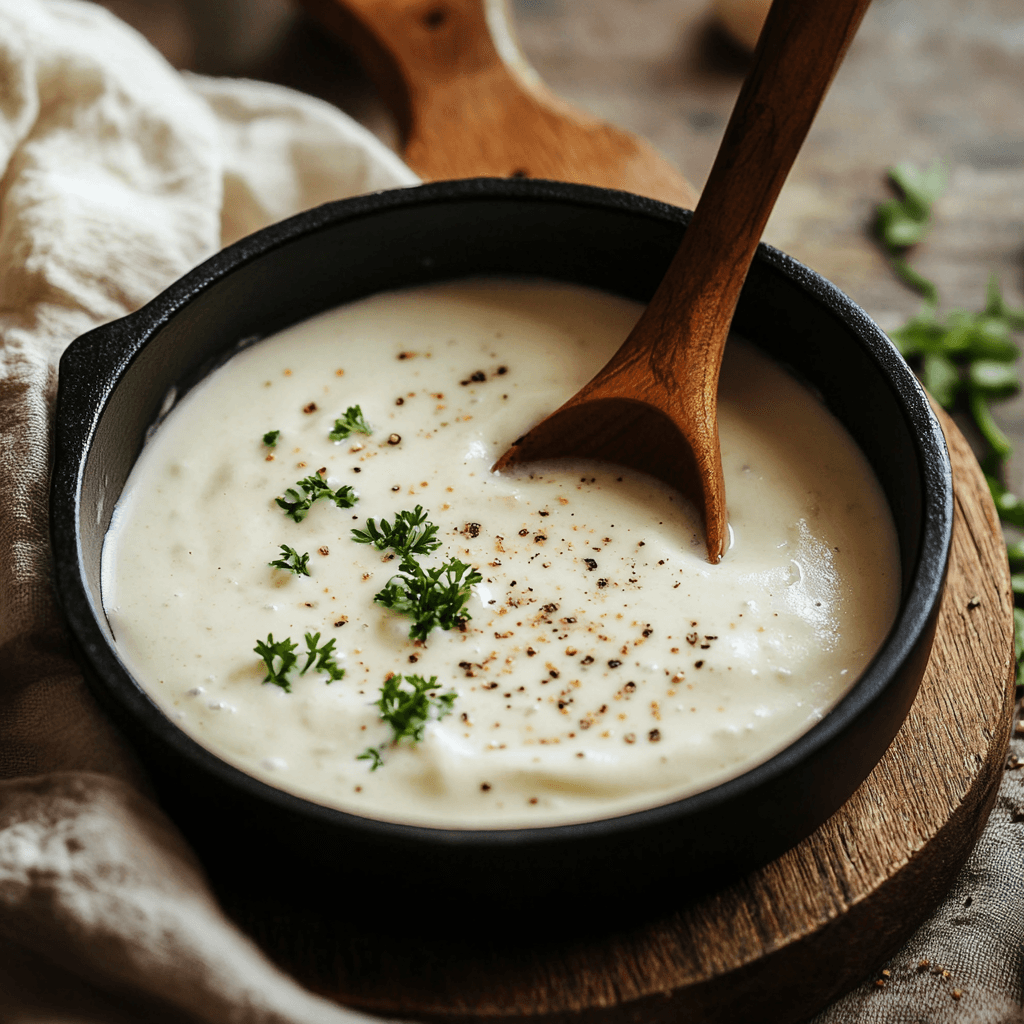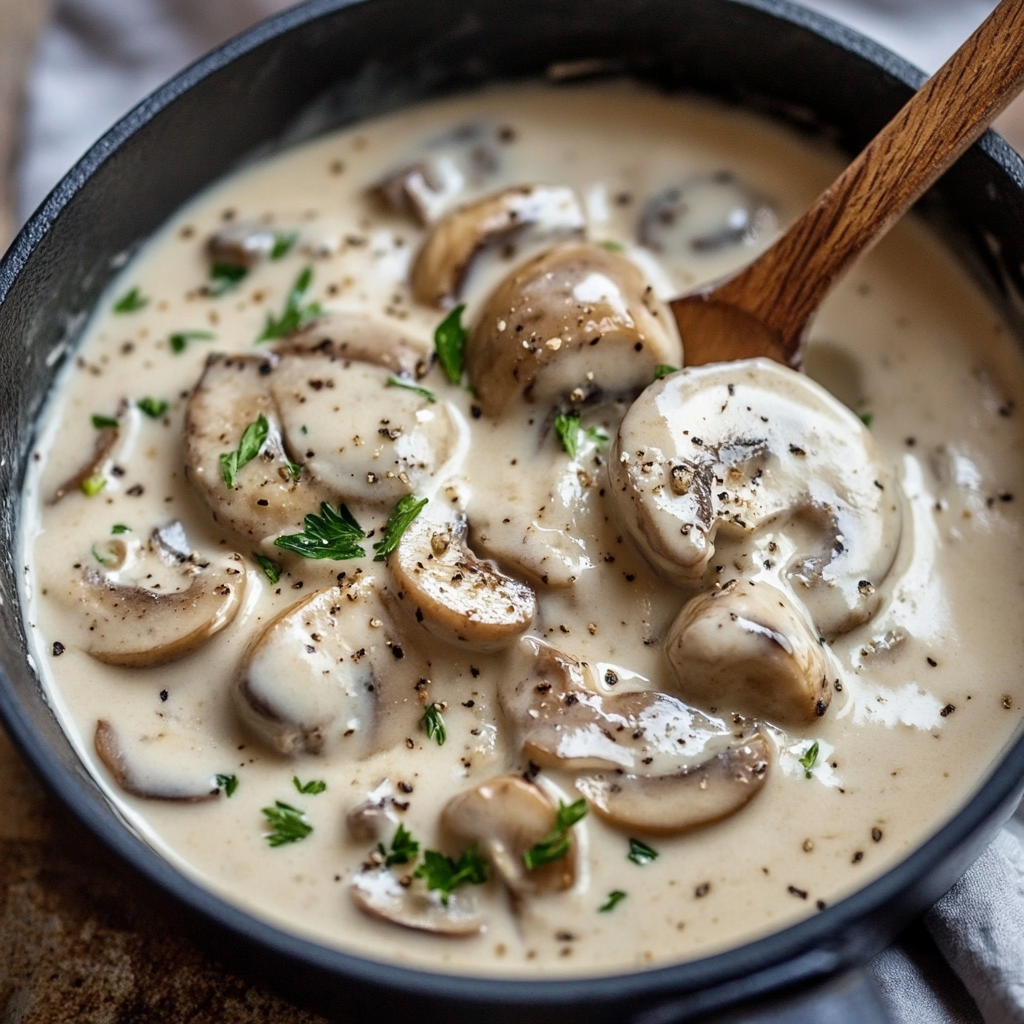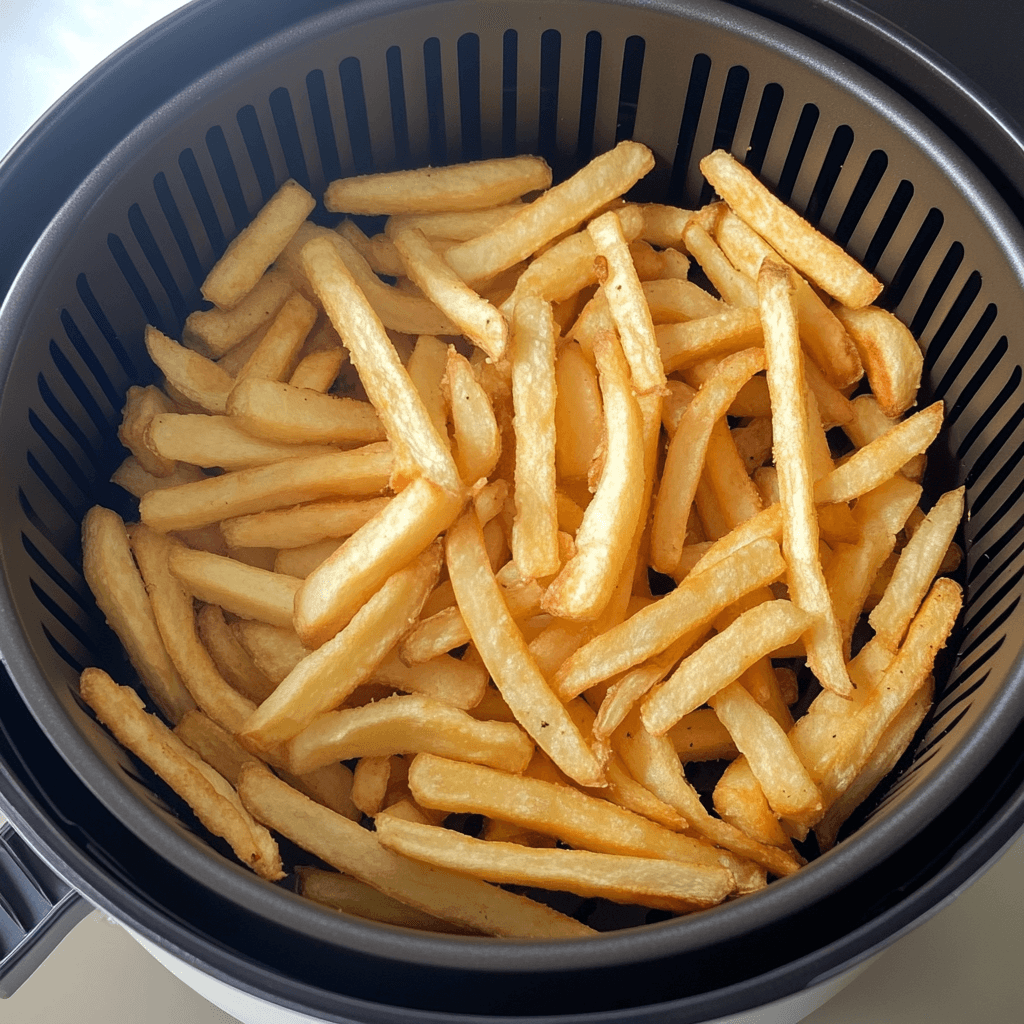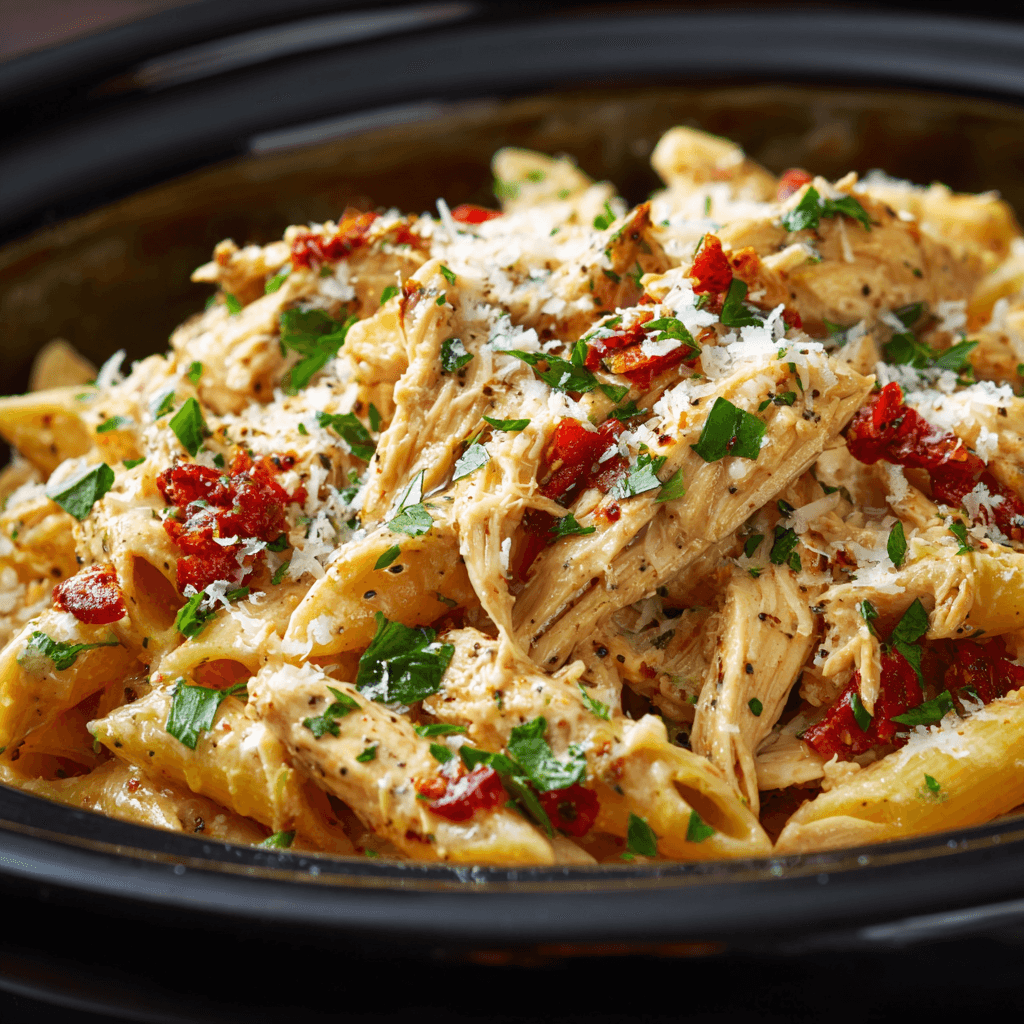Introduction to White Sauce
What is White Sauce?
White sauce, also known as Béchamel sauce, serves as a classic staple in cooking and the foundation for many recipes. Cooks prepare it by combining a simple roux of butter and flour with milk to create a smooth, creamy sauce. Its mild flavor allows it to adapt to both savory and sweet dishes. Whether you use it alone or as part of a complex recipe, white sauce remains an essential part of any cook’s repertoire.
Historical Background of White Sauce (Béchamel Sauce)
French cuisine first introduced white sauce, where people know it as Béchamel. Chefs named it after Louis de Béchamel, a steward to King Louis XIV, although earlier cooks had already developed it. Over time, culinary experts like Auguste Escoffier classified it as one of the five “mother sauces” in French cooking. Today, cooks around the world use it as a base for countless dishes, from lasagna to soufflés.
Why White Sauce is a Kitchen Essential
The Versatility of White Sauce
White sauce earns its place in the kitchen because of its unmatched versatility. Cooks can transform it into various derivative sauces by adding ingredients like cheese, herbs, or spices. For example, adding cheese creates a rich Mornay sauce, while a touch of nutmeg or mustard elevates its flavor for specific recipes. Home cooks and professionals alike use white sauce as a creamy base for soups, gratins, and casseroles.
Popular Dishes That Use White Sauce
White sauce enhances a wide range of popular dishes. It forms the base of lasagna, macaroni and cheese, and chicken pot pie. Many also use it as a topping for vegetables, such as cauliflower or broccoli, and as a base for creamy pasta dishes. Beyond savory recipes, you can sweeten white sauce for use in desserts like custards or puddings. Its adaptability to various cuisines and recipes makes it a cornerstone of culinary creativity.
Ingredients for the Perfect White Sauce Recipe
Core Ingredients: Flour, Butter, Milk
The foundation of a perfect white sauce depends on three simple ingredients:
- Flour: This acts as the thickening agent, giving the sauce its creamy consistency. To achieve the best results, always use all-purpose flour.
- Butter: Not only does butter form the base of the roux, but it also provides a rich, velvety flavor. Make sure to use unsalted butter to maintain control over the seasoning.
- Milk: This serves as the liquid base for the sauce. While whole milk is ideal for a richer texture, low-fat milk can also work if you prefer a lighter option.
When combined, these ingredients create a smooth and adaptable base for countless dishes.
Optional Add-Ins for Enhanced Flavor
To enhance your white sauce, you can experiment with optional ingredients:
- Salt and Pepper: These are essential for basic seasoning, which helps bring out the sauce’s natural flavor.
- Nutmeg: Adding a pinch of nutmeg introduces a warm, slightly nutty note that complements savory dishes.
- Cheese: For a decadent cheese sauce, mix in grated Parmesan, cheddar, or your favorite melting cheese.
- Herbs: Fresh or dried herbs such as parsley, thyme, or bay leaf can infuse the sauce with delightful aromatics.
By incorporating these add-ins, you can tailor the sauce to suit a variety of recipes and flavor profiles.
Tools and Equipment Needed
Basic Utensils for Making White Sauce
To prepare a perfect white sauce, having the right tools on hand is essential:
- Saucepan: A medium-sized saucepan with a heavy base ensures even heat distribution, preventing scorching.
- Whisk: This is crucial for blending the ingredients smoothly and avoiding lumps.
- Measuring Cups and Spoons: Accurate measurements of flour, butter, and milk are necessary for consistent results.
- Wooden Spoon or Spatula: These are great for stirring the sauce and scraping the sides of the pan to ensure even cooking.
Together, these tools simplify the cooking process, allowing you to achieve perfect results with ease.
Pro Tips for Choosing the Right Saucepan
Choosing the right saucepan can make a significant difference when preparing white sauce:
- First, select a saucepan with a heavy bottom, which promotes even heat distribution and minimizes the risk of burning.
- Additionally, consider using a nonstick pan, as this makes cleanup much easier, particularly when working with thicker sauces.
- Finally, opt for a saucepan with sufficient depth to allow thorough mixing without the risk of spills.
By using these tips and the right equipment, you can ensure that your white sauce turns out smooth and delicious every time.
The Science Behind White Sauce
The Role of Flour in Thickening
Flour plays a crucial role in white sauce, serving as the thickening agent that gives the sauce its creamy texture. When combined with butter to form a roux, the flour absorbs the fat and creates a paste. As you cook the roux and add milk, the starch in the flour swells and disperses, thickening the liquid into a smooth and velvety sauce. The longer the roux is cooked before adding milk, the deeper the flavor, but overcooking can reduce its thickening ability, so timing is key.
Achieving a Smooth, Lump-Free Consistency
To achieve a smooth, lump-free consistency in your white sauce, proper technique is essential. First, ensure the flour and butter are evenly blended when making the roux. Gradually whisking in the milk prevents lumps from forming, as this process allows the starch to disperse evenly. Additionally, using warm or room-temperature milk can help integrate the ingredients more smoothly, creating a flawless sauce.
Step-by-Step White Sauce Recipe
Prepping the Ingredients
Before you begin, gather all your ingredients to streamline the cooking process. You’ll need 2 tablespoons of butter, 2 tablespoons of all-purpose flour, and 1 cup of milk. Measure everything accurately to ensure the sauce turns out perfectly. Having salt, pepper, and optional seasonings like nutmeg or herbs nearby is also helpful for flavoring.
Cooking the Roux
- Heat a medium-sized saucepan over low to medium heat.
- Melt the butter in the pan, ensuring it doesn’t brown.
- Once melted, add the flour and whisk continuously to form a smooth paste. Cook the roux for about 1–2 minutes to remove the raw flour taste, but avoid letting it darken unless you want a nuttier flavor for specific recipes.
Gradually Adding Milk
- Begin adding the milk slowly, about a quarter cup at a time, while whisking constantly. This gradual process prevents lumps from forming.
- Once the first portion of milk is fully incorporated, continue adding the rest in small increments, whisking after each addition.
- Cook the sauce over low heat, stirring frequently, until it thickens to your desired consistency. This typically takes 5–7 minutes.
Add salt, pepper, and any optional seasonings to taste. Your white sauce is now ready to use as a base for a variety of dishes!
This explanation combines the science behind white sauce with practical steps to help you create a smooth, flavorful result every time.
Common Mistakes and How to Avoid Them
Why Does White Sauce Turn Lumpy?
White sauce can turn lumpy if the flour and butter in the roux are not evenly combined or if the milk is added too quickly. Uneven heat distribution or whisking inconsistently can also lead to lumps. To prevent this, make sure to whisk the roux thoroughly before adding milk and gradually pour in the milk while whisking constantly. Using warm or room-temperature milk can also help integrate the ingredients more smoothly.
How to Save Overcooked Sauce
Overcooked sauce can become too thick or develop a grainy texture. To save it, remove the saucepan from heat immediately. If the sauce is too thick, add a small amount of warm milk, a tablespoon at a time, while whisking to restore its creamy consistency. For graininess, strain the sauce through a fine mesh sieve or use an immersion blender to smooth it out. These quick fixes can salvage your sauce and bring it back to a silky texture.

Variations of White Sauce Recipe
Garlic-Infused White Sauce
For a flavorful twist, try making a garlic-infused white sauce. Begin by sautéing minced garlic in the butter before adding flour to create the roux. This adds a rich, aromatic flavor that pairs beautifully with pasta, chicken, or seafood dishes.
Cheese Sauce (Mornay Sauce)
Transform your white sauce into a creamy cheese sauce by adding grated cheese. After the sauce has thickened, stir in shredded cheddar, Parmesan, or Gruyere until melted and smooth. Mornay sauce is perfect for mac and cheese, gratins, or as a topping for vegetables.
Herb-Infused White Sauce
Herb-infused white sauce adds a fresh, aromatic dimension to your dishes. While cooking the roux, add a sprig of thyme, a bay leaf, or finely chopped parsley. Allow the herbs to steep as the sauce thickens, then strain them out before serving for a smooth, herbaceous flavor.
By avoiding common mistakes and exploring these variations, you can master the art of white sauce while customizing it to suit a variety of dishes and flavor profiles.
Pairing White Sauce with Dishes
Pasta Dishes Featuring White Sauce
White sauce is a classic choice for creamy pasta dishes. It pairs perfectly with fettuccine, penne, or linguine, creating rich and satisfying meals. Popular recipes include alfredo pasta, where white sauce serves as the base, and carbonara-inspired dishes, enhanced with garlic or Parmesan. For added texture and flavor, you can incorporate vegetables like spinach, mushrooms, or peas, as well as proteins like chicken or shrimp.
Using White Sauce in Casseroles and Bakes
White sauce is a key ingredient in many casseroles and baked dishes. Use it to layer lasagna or potato gratin, where its creamy texture complements other ingredients. It also works well as a base for chicken and broccoli bakes or seafood casseroles, tying together the flavors and providing moisture during baking. Adding cheese or herbs to the sauce before assembling the dish can elevate its taste even further.
Nutritional Information
Caloric Breakdown per Serving
White sauce is rich and creamy, which makes it a satisfying addition to many dishes. A typical serving (about 1/4 cup) contains approximately 120–150 calories, depending on the amount of butter and milk used. Most of the calories come from the fat in the butter and milk. While it’s indulgent, portion control allows you to enjoy it without overloading on calories.
Adjusting Ingredients for Low-Calorie Versions
For a lighter version of white sauce, substitute the butter with olive oil or reduce the quantity slightly. Use low-fat milk instead of whole milk to cut down on fat content. You can also thicken the sauce with a smaller amount of flour and enhance the flavor with herbs and spices instead of relying solely on richness. These small adjustments make white sauce more calorie-conscious without compromising its creamy texture and versatility.
By pairing white sauce with various dishes and understanding its nutritional content, you can enjoy this versatile ingredient while tailoring it to suit your preferences and dietary goals.
Tips for Perfecting the White Sauce Recipe
How to Achieve the Right Thickness
The thickness of white sauce depends on its intended use. To achieve the perfect consistency, focus on the roux-to-milk ratio. For a thinner sauce, use more milk, while for a thicker sauce, increase the amount of flour and butter in the roux. Whisk constantly while adding the milk to ensure even thickening. If the sauce is too thick, gradually add warm milk while whisking until it reaches the desired texture. Conversely, if it’s too thin, simmer the sauce for a few minutes to reduce and thicken it.
Adjusting Flavors to Suit Different Dishes
White sauce is incredibly versatile and can be adjusted to enhance various recipes. For pasta, add grated cheese or garlic for depth of flavor. For vegetable bakes, season with nutmeg, thyme, or parsley. Sweet dishes can benefit from a touch of vanilla or cinnamon. Tasting the sauce as you go ensures that the flavor complements the dish you’re preparing.
Storing and Reheating White Sauce
Best Practices for Refrigeration
To store white sauce in the refrigerator, let it cool completely before transferring it to an airtight container. It can be stored for up to 3–4 days. When reheating, do so gently over low heat, stirring frequently to prevent lumps from forming. If the sauce thickens too much during storage, add a splash of milk or water while reheating to restore its consistency.
Freezing White Sauce for Later Use
White sauce can be frozen for up to 3 months, though its texture may change slightly. To freeze, let the sauce cool completely and transfer it to a freezer-safe container or bag, leaving some space for expansion. When you’re ready to use it, thaw the sauce in the refrigerator overnight. Reheat it slowly over low heat, whisking vigorously to restore its smoothness. Adding a little fresh milk can help improve the texture after freezing.
Frequently Asked Questions About White Sauce Recipe
What is Basic White Sauce Made Of?
Basic white sauce, also known as béchamel, is made from butter, flour, and milk. These ingredients are combined to form a roux, which is then gradually mixed with milk to create a creamy, smooth sauce. Salt, pepper, and nutmeg are commonly added for flavor.
What are the 3 Types of White Sauces?
The three main variations of white sauce include:
- Basic White Sauce (Béchamel): The foundational recipe made with butter, flour, and milk.
- Cheese Sauce (Mornay Sauce): A white sauce enriched with cheese, often used for pasta or gratins.
- Velouté Sauce: Similar to white sauce but made with stock (chicken, fish, or veal) instead of milk.
What’s the Difference Between White Sauce and Alfredo Sauce?
White sauce (béchamel) is a basic recipe made from butter, flour, and milk, used as a base for many dishes. Alfredo sauce, on the other hand, is richer and made with butter, heavy cream, and Parmesan cheese, often seasoned with garlic. While white sauce is versatile, alfredo sauce is specifically designed for pasta.
What’s the best way to store leftovers?
Keep leftovers in an airtight container in the fridge for up to 4 days. Reheat in the microwave or oven until hot and bubbly. For food safety tips, refer to USDA guidelines on leftovers .
What is Hibachi White Sauce Made Of?
Hibachi white sauce, also known as yum yum sauce, is a creamy condiment served at Japanese steakhouses. It is typically made with mayonnaise, tomato paste, butter, sugar, paprika, and sometimes a touch of garlic powder or hot sauce. This sauce differs significantly from traditional white sauce in both flavor and use.
These tips and answers provide a comprehensive guide for mastering white sauce and addressing common questions, ensuring success in your culinary adventures!
Creative Uses for White Sauce
Transforming Leftovers with White Sauce
White sauce is a fantastic way to reinvent leftovers into delicious new dishes. Use it to create a creamy pasta bake by mixing leftover chicken, vegetables, or cooked pasta with the sauce and topping it with breadcrumbs and cheese. Alternatively, turn roasted vegetables into a gratin by layering them in a baking dish, pouring white sauce over them, and baking until bubbly and golden. You can also use it as a base for pot pies by combining it with leftover meat and vegetables before covering it with pie crust or biscuit dough.
Using White Sauce as a Base for Soups and Sauces
White sauce serves as an excellent starting point for hearty soups and flavorful sauces. To make a creamy soup, dilute the sauce with broth and add ingredients like potatoes, broccoli, or mushrooms. For a rich seafood bisque, mix white sauce with seafood stock and chunks of shrimp or crab. As a base for other sauces, white sauce can easily transform into a cheese sauce, garlic cream sauce, or mustard sauce, making it incredibly versatile for enhancing your favorite recipes.
These creative applications for white sauce ensure that nothing goes to waste while elevating your dishes to a new level of flavor and comfort.
To optimize the “White Sauce Recipe” article with internal links, consider integrating the following references:
For readers looking to explore other sauce recipes, the Creamy and Delicious Alfredo Sauce Recipe Without Heavy Cream offers a lighter option perfect for pasta dishes. Additionally, the Authentic Alfredo Sauce Recipe – Creamy Perfection in Every Bite provides a rich and indulgent alternative. For versatile chicken dishes that pair beautifully with white sauce, check out the Best Bone-In Chicken Breast Recipes for Every Occasion.
These internal links not only enhance navigation but also guide readers to complementary recipes, enriching their cooking repertoire while boosting SEO for the website.
Conclusion
Why Every Home Cook Should Master White Sauce
White sauce, or béchamel, is more than just a cooking staple—it’s a gateway to countless recipes and culinary possibilities. Its creamy, versatile nature allows it to be the foundation for a variety of dishes, from comforting casseroles to elegant pasta creations. By mastering white sauce, every home cook gains the ability to elevate simple ingredients into gourmet meals. Furthermore, its adaptability makes it indispensable in the kitchen, whether you’re creating savory bakes or sweet desserts.
Encouragement to Experiment with the Recipe
Once you’ve learned the basics, don’t hesitate to make white sauce your own. Experiment with different flavors by adding herbs, spices, or cheeses to suit specific dishes. Use it as a starting point to explore creative variations like garlic-infused or herb-infused sauces. With practice and imagination, you’ll not only perfect the classic recipe but also discover new ways to enhance your favorite meals. So grab your whisk, and let your culinary creativity flow!





